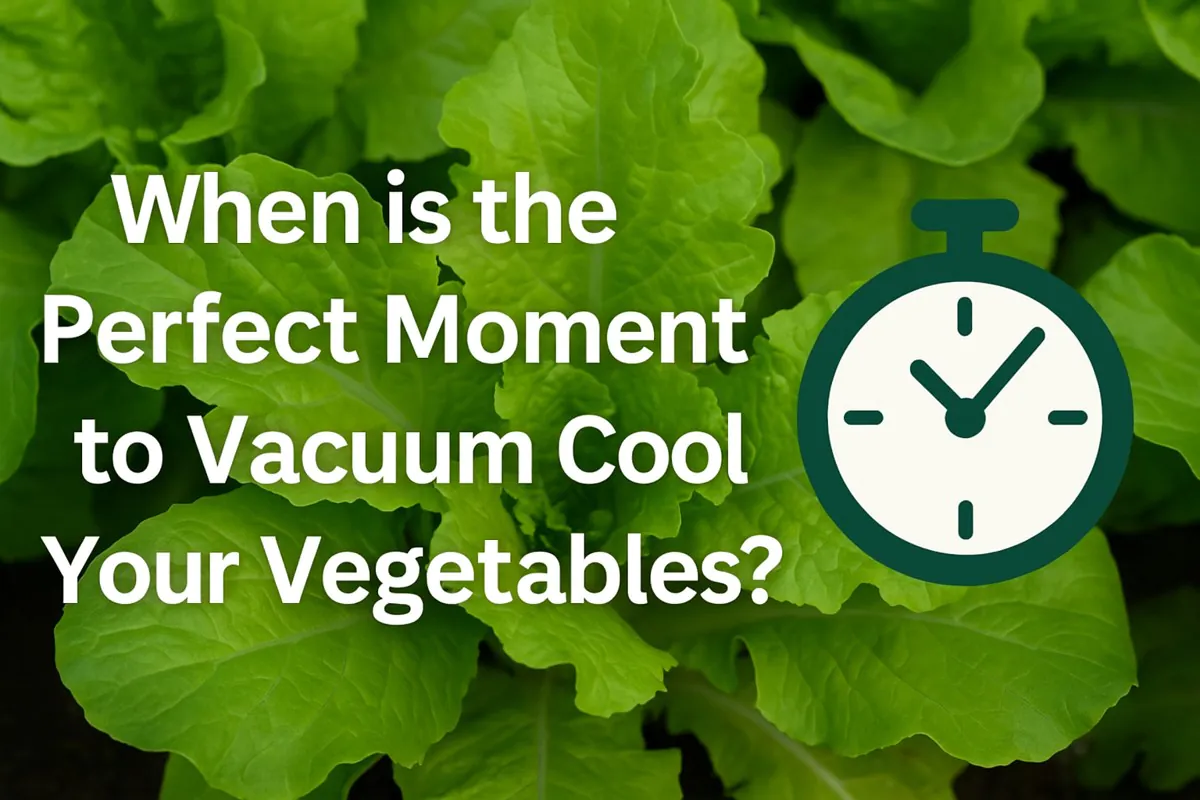
When is the Perfect Moment to Vacuum Cool Your Vegetables?
Are your vegetables losing freshness before they even reach the cold room? That critical gap between harvest and cooling is where your valuable shelf life—and profit—disappears.
The perfect moment to vacuum cool vegetables is as soon as possible after harvest. This immediate removal of "field heat" is the single most critical step to halt the degradation process and lock in maximum quality and shelf life.
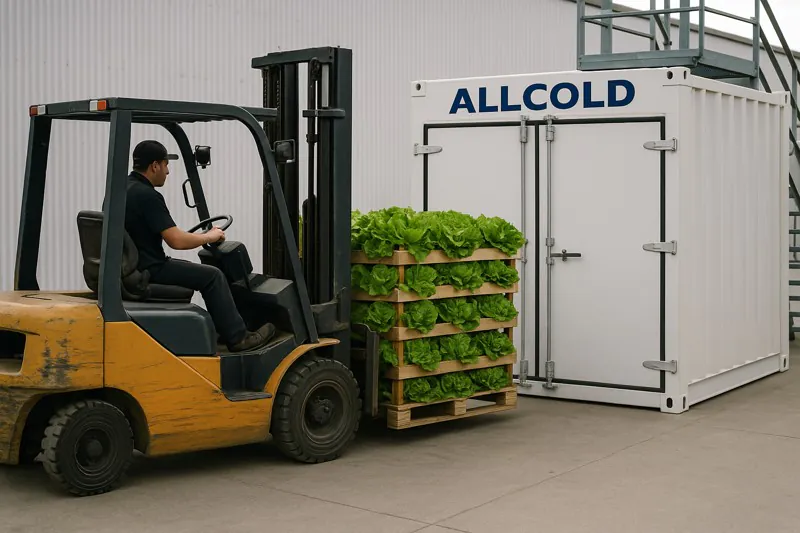
The principle is simple: a vegetable is a living thing that starts to die the moment it’s picked. Your job is to slow down that process as quickly as possible. Let’s explore why this timing is not just a detail, but the foundation of your entire post-harvest strategy.
Why is "Field Heat" Your Biggest Enemy?
Ever touch a bin of freshly picked produce sitting in the sun? That warmth, known as field heat, is secretly burning away your product’s life force and your profits with every passing minute.
Field heat is the heat a vegetable holds from the sun and warm air at harvest. It acts as an engine, dramatically accelerating respiration, moisture loss, and decay. Every hour this heat remains, significant shelf life is lost forever.
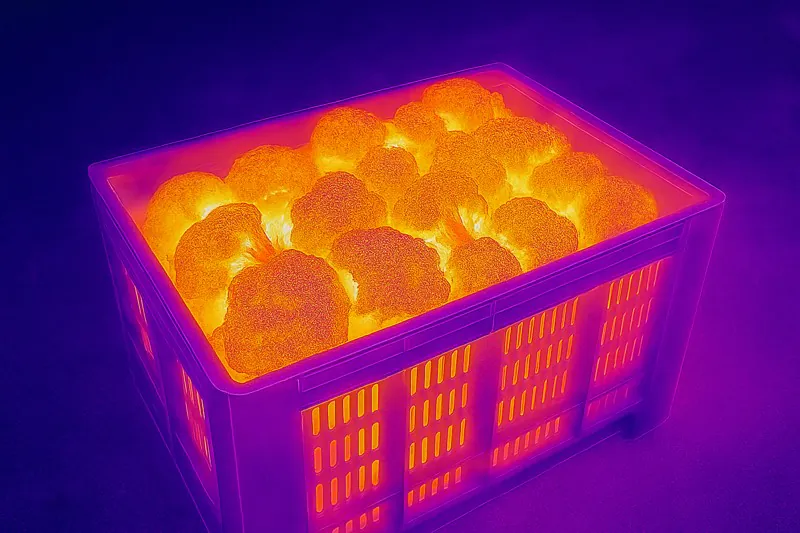
Think of respiration as the vegetable breathing. It consumes its own stored sugars and oxygen to produce energy, just like a runner in a race. Field heat makes the vegetable run a frantic sprint. For every 10°C (18°F) increase in temperature, this respiration rate can double or even triple. A head of lettuce harvested at 25°C (77°F) is aging much faster than one held at 2°C (36°F). This rapid breathing burns up the very sugars that give it flavor and the water that keeps it crisp. For a farmer like Carlos, who harvests tons of produce at a time, the cumulative effect of this field heat across his entire harvest is a massive, invisible drain on his product’s quality and value.
The Science of Heat and Decay
The damage from field heat is twofold. First, there’s the visible damage: water loss. The warm vegetable loses moisture to the drier air around it, leading to wilting and loss of saleable weight. Second, there’s the invisible damage: the depletion of nutrients and sugars. The vegetable is literally consuming itself to stay alive. By the time it finally cools down in a traditional cold room hours later, it’s already a shadow of its peak-freshness self. Our allcold vacuum coolers1 are designed specifically to fight this enemy. By removing field heat2 in minutes, we stop this frantic sprint and put the vegetable into a state of rest, preserving its precious resources for a longer shelf life3.
| Temperature | Approximate Respiration Rate | Consequence |
|---|---|---|
| 25°C (77°F) – Field | Very High (Sprint) | Rapid sugar loss, high moisture loss, short life. |
| 15°C (59°F) – Shade | High (Jog) | Moderate sugar and moisture loss. |
| 5°C (41°F) – Cold | Low (Walk) | Minimal loss, shelf life is extended. |
| 2°C (36°F) – Optimal | Very Low (Rest) | Degradation is paused, maximum shelf life achieved. |
How Does Immediate Cooling Impact the Entire Supply Chain?
Do you think the benefits of fast precooling stop at your farm gate? In reality, a delay at the start creates a domino effect of problems and lost value for everyone who handles your product.
Immediate cooling creates a "buffer" of quality and time. This gives the grower more flexibility, the distributor a more stable product, the retailer less waste, and the consumer a much better experience.
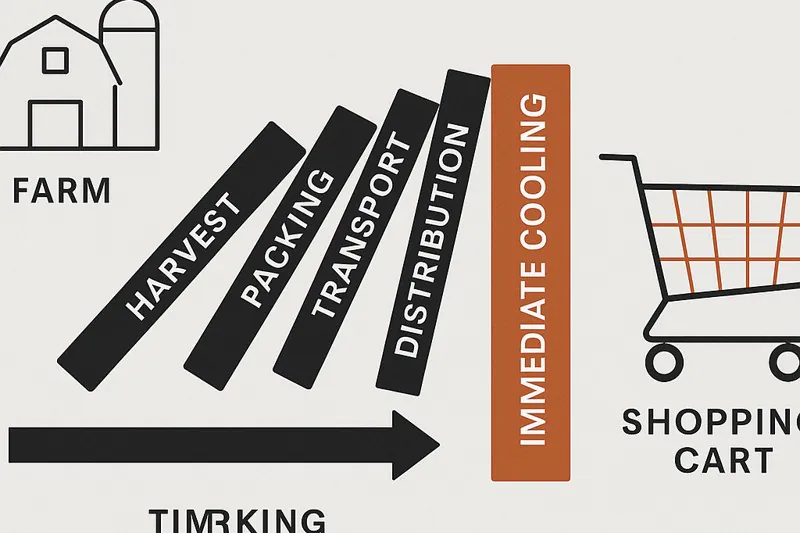
When I talk to professional buyers like Norman, their biggest pain point is inconsistency. A shipment that was delayed before cooling is a ticking time bomb. It might look okay on arrival, but it will decay much faster on the shelf. By vacuum cooling immediately, you are essentially "banking" shelf life. You are adding days of peak freshness to the product’s life. This gives you, the grower, a huge advantage. You are not forced to sell immediately; you have a stable, high-quality product with a long life, giving you leverage in the market. This quality is then passed down the line. The distributor has fewer rejections, and the supermarket has less "shrink"—the industry term for product that has to be thrown away.
The Ripple Effect of Quality
Think of it this way: a head of lettuce has about 14 days of potential life under ideal conditions. If it sits for 12 hours waiting to be cooled, it might lose 2-3 of those days right at the start. That loss is permanent. Now, that 11-day product moves through the supply chain4. Everyone has less time. Deadlines are tighter, and the risk of spoilage before it can be sold is much higher. By cooling in 25 minutes, you preserve almost the full 14 days of potential. You are shipping confidence. You are providing a reliable, premium product that makes everyone’s job easier and more profitable. This is how you build a reputation as a top-tier supplier.
| Supply Chain Stakeholder | Impact of Delayed Cooling (12-hour wait) | Impact of Immediate Vacuum Cooling |
|---|---|---|
| Grower (Carlos) | Product life reduced by 2-3 days; must sell fast. | Full shelf life preserved; more market flexibility. |
| Buyer (Norman) | Receives a product with a shorter sales window. | Receives a premium product with maximum life. |
| Retailer | Higher shrink/waste; potential for lost sales. | Less waste; better-looking product sells faster. |
| Consumer | Produce wilts quickly in the fridge. | Produce stays fresh longer, improving satisfaction. |
Where Exactly Should the Vacuum Cooler Be in Your Workflow?
You understand the need for speed, but where you place the vacuum cooler in your packing house is critical. Getting the workflow right prevents bottlenecks and maximizes the machine’s efficiency.
The vacuum cooler should be placed right at the beginning of the packing line. The ideal flow is: Harvest -> Receive & Trim -> Vacuum Cool -> Final Pack/Box -> Cold Storage. Cooling before boxing is key.
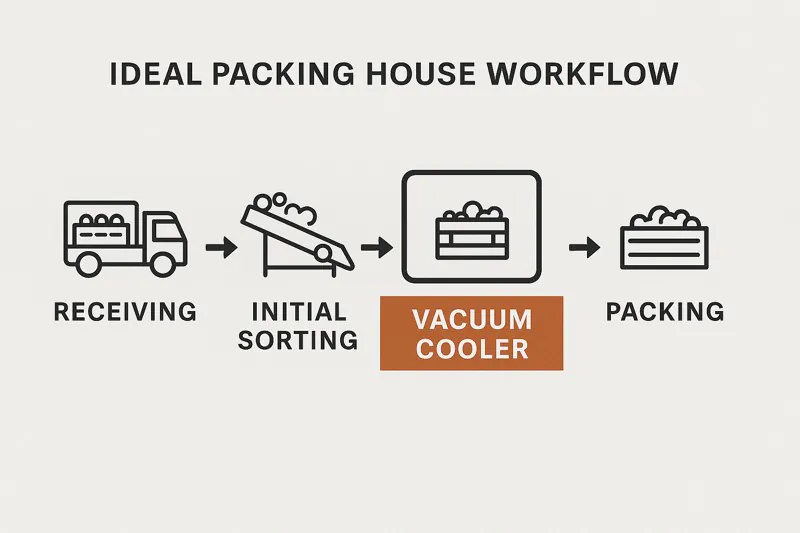
The goal is to remove field heat before the product is insulated inside its final packaging. I’ve seen clients who would pack their lettuce into wax-lined boxes and then try to cool the pallet. This is very inefficient. The box acts as an insulator, trapping heat and making it much harder for water vapor to escape. The correct method is to cool the produce while it’s still in open, vented harvest crates. This allows the cooling vapor to move freely, ensuring every single leaf is cooled quickly and evenly. Once the product is cold, it can then move down the line to be packed into its final shipping boxes before being moved to a holding cold room.
Designing an Efficient Process
This "cool-first" approach streamlines the entire operation. It turns cooling from a slow, multi-hour batch process into a quick, continuous-flow step. For a highly organized operation like a central kitchen managed by someone like Sophia, this kind of process control5 is essential. By placing the vacuum cooler6 at the front, you ensure that every product that enters the packing line is already stabilized and at a safe temperature. This reduces the load on your large cold storage rooms, as they only need to hold the temperature, not actively remove massive amounts of field heat. It’s a smarter, faster, and more energy-efficient7 way to work, and it’s how you get the absolute most out of your investment in the technology.
| Workflow Stage | Cool-First Model (Optimal) | Cool-Last Model (Inefficient) |
|---|---|---|
| 1. Receiving | Product goes to trim/sort. | Product goes to trim/sort/pack. |
| 2. Pre-Cooling | Vacuum cool in harvest crates (25 mins). | Product is boxed and palletized. |
| 3. Packing | Chilled product is packed into shipping boxes. | (This step was done before cooling) |
| 4. Storage | Pallets moved to cold room to hold temp. | Pallets moved to cold room to remove heat (12+ hrs). |
| Result | Fast, efficient, high-quality output. | Slow, energy-intensive, risk of uneven cooling. |
Can You Ever Afford to Wait to Cool Your Produce?
Are there situations where a delay is acceptable? While life on a farm is never perfect, understanding the true cost of waiting will show you that it’s a cost you almost never want to pay.
Waiting to cool is a direct trade-off against quality and profit. For high-value, perishable items like leafy greens, any delay is extremely costly. The benefits of immediate cooling almost always outweigh any logistical reason for waiting.
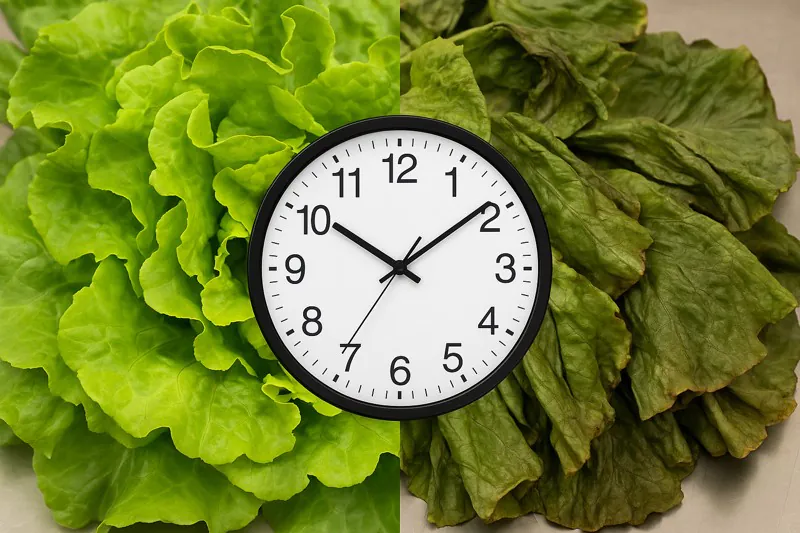
Let’s be direct. For a head of lettuce, every hour it sits at 20°C (68°F) can reduce its final shelf life by as much as a day. A four-hour delay could mean you lose four days of saleable life. Can you afford that? For delicate products like mushrooms, broccoli, or fresh herbs, the math is just as brutal. These products have very high respiration rates, and waiting is simply not an option if you want to deliver a premium product. I once worked with a client who used to pile up their harvest and cool it all at the end of the day. After we installed a vacuum cooler and they started a "cool as you pick" system, their spoilage rate in the first week of storage dropped by over 70%. That’s a massive, immediate return on investment.
The Rare Exceptions and The Overwhelming Rule
Are there any exceptions? Sure. Hardy, low-respiration root vegetables like potatoes or carrots are much more forgiving of a delay. But these are not typically the products where vacuum cooling8 provides the most value anyway. For the high-margin, highly perishable products9 where vacuum cooling is a game-changer, the rule is absolute: faster is better. Don’t think of it as "can I afford to vacuum cool immediately?" Think of it as "can I afford not to?" The lost shelf life, reduced quality, and damage to your reputation as a supplier are the real costs you pay for every minute of delay.
| Product Type | Sensitivity to Delay | Shelf Life Loss from a 4-Hour Delay at 20°C | Recommendation |
|---|---|---|---|
| Lettuce/Spinach | Extremely High | 2-4 days | Cool Immediately |
| Broccoli | Very High | 2-3 days | Cool Immediately |
| Mushrooms | Very High | 1-2 days | Cool Immediately |
| Carrots (bulk) | Low | Minimal | Less time-critical |
Conclusion
The timing of vacuum cooling is not just a detail; it is the most important decision in your post-harvest process. Cooling immediately after harvest is the key to locking in freshness, maximizing shelf life, and protecting your profits.
-
Learn how vacuum coolers operate to preserve food freshness and quality, a must-know for anyone in the food industry. ↩
-
Understanding field heat is crucial for preserving vegetable freshness and quality. Explore this link to learn more about its impact. ↩
-
Discover effective methods to extend the shelf life of vegetables, ensuring better quality and reduced waste. This resource is invaluable for producers. ↩
-
Learning about supply chain best practices can improve efficiency and reduce costs, benefiting all stakeholders involved. ↩
-
Learning about process control can provide insights into optimizing workflows and enhancing productivity. ↩
-
Understanding vacuum coolers can enhance your knowledge of efficient cooling processes in food production. ↩
-
Exploring energy-efficient systems can help you save costs and improve sustainability in your operations. ↩
-
Understanding vacuum cooling can help you maximize the shelf life and quality of perishable products. ↩
-
Learning about these products can enhance your knowledge of market dynamics and profitability in the food industry. ↩

Mila
You May Also Like
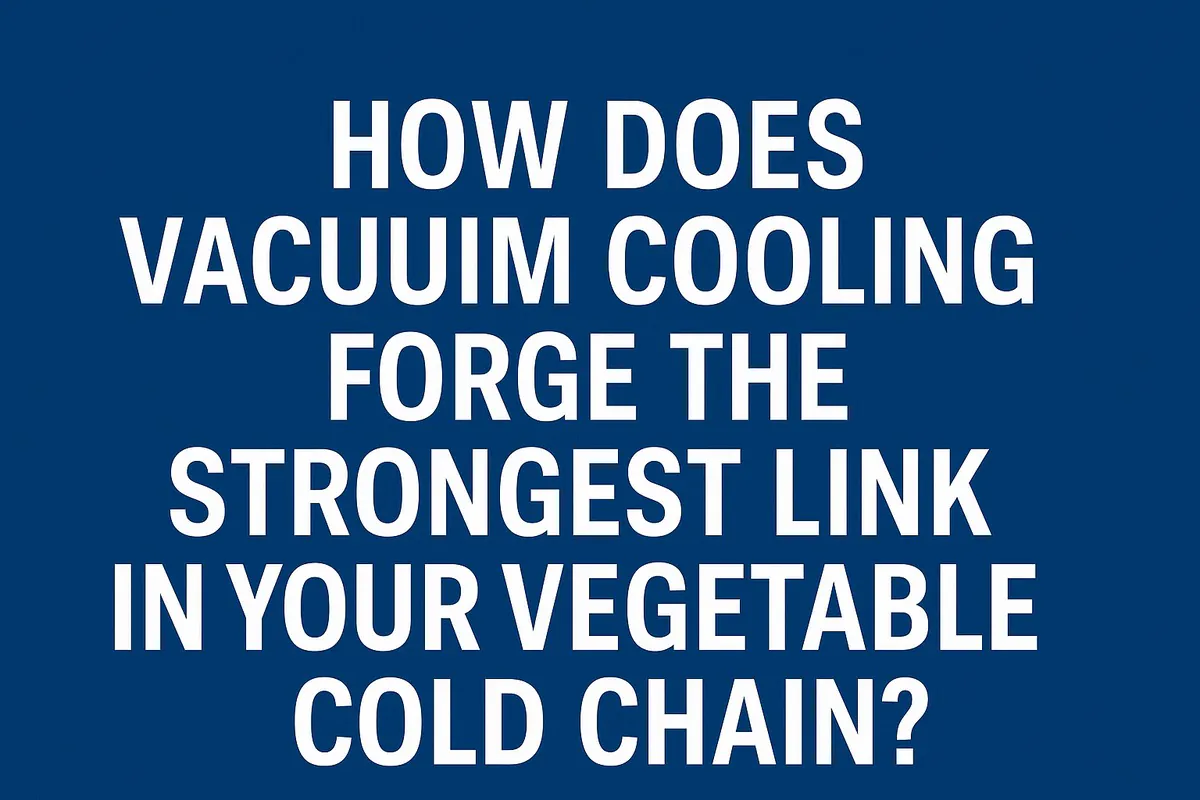
How Does Vacuum Cooling Forge the Strongest Link in Your Vegetable Cold Chain?
You work tirelessly to grow perfect, healthy vegetables. Yet, you know that from the moment of harvest, an invisible clock
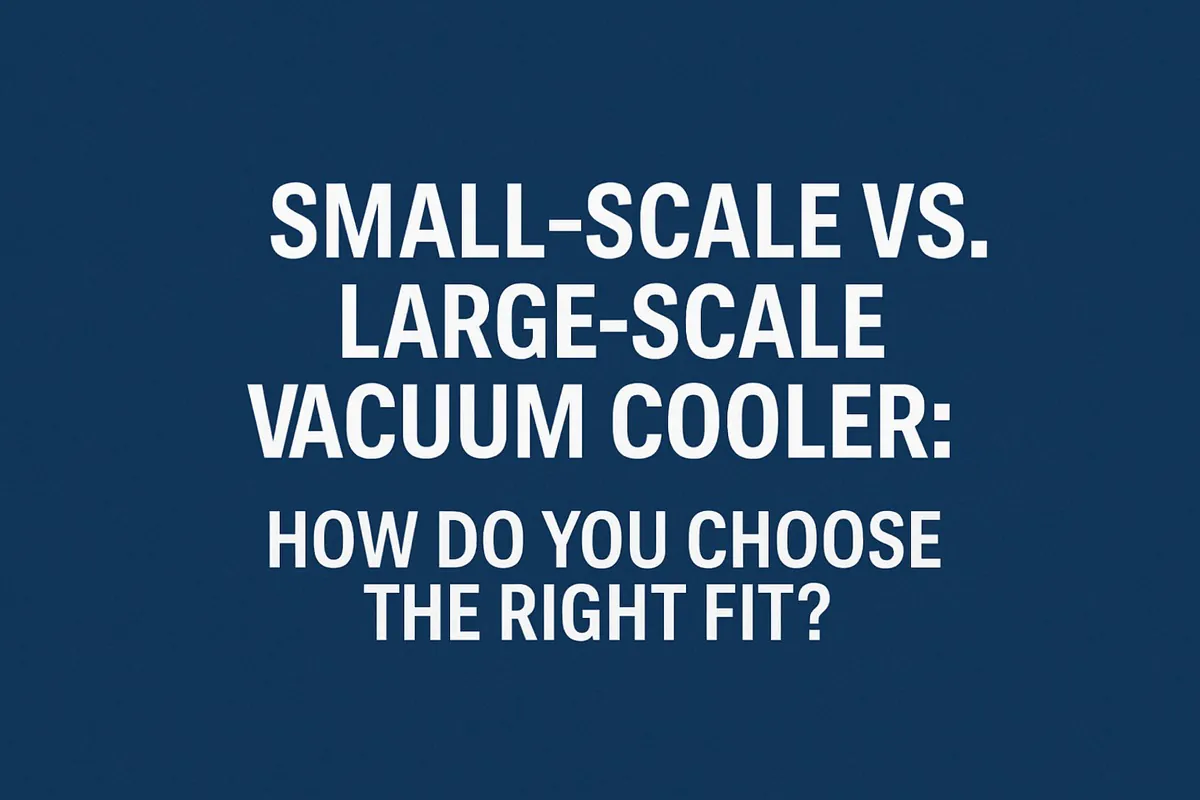
Small-Scale vs. Large-Scale Vacuum Cooler: How Do You Choose the Right Fit?
You’re convinced that vacuum cooling is the key to elevating your product quality, but now you face a critical decision.
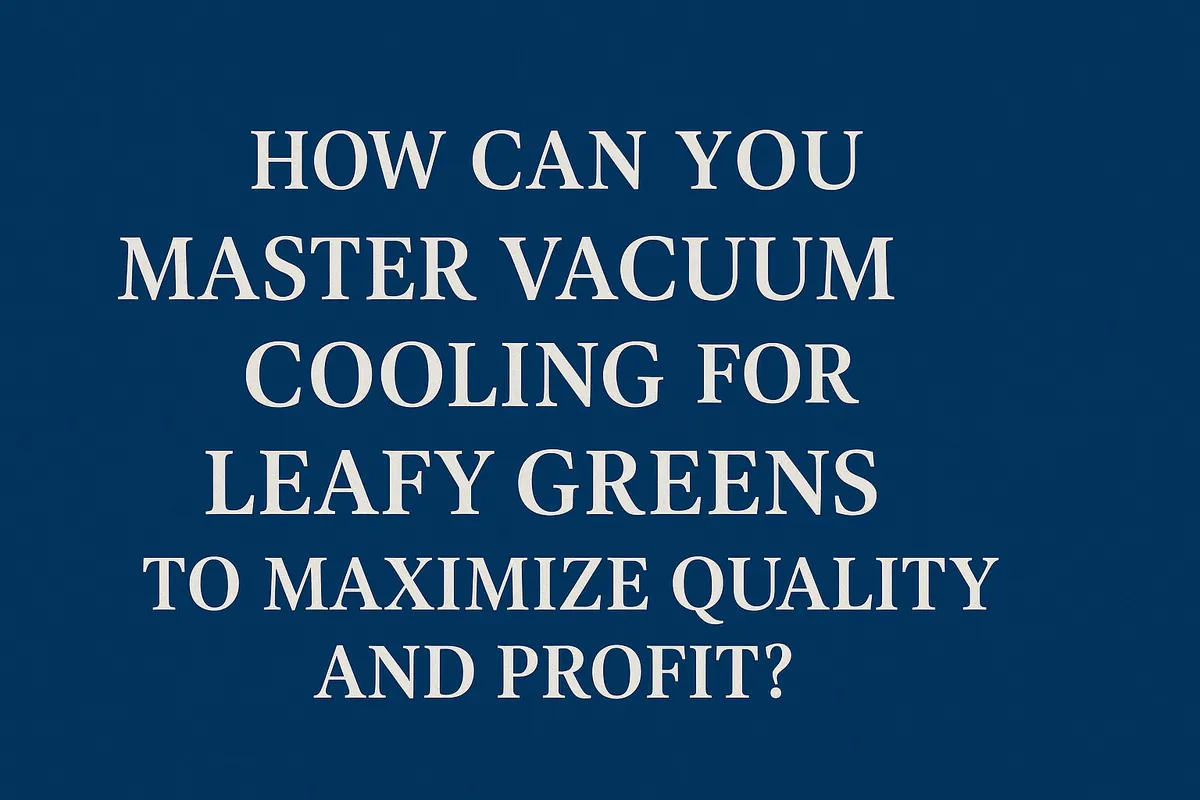
How Can You Master Vacuum Cooling for Leafy Greens to Maximize Quality and Profit?
You grow beautiful, vibrant leafy greens, but you know the invisible enemy is time. From the moment of harvest, the
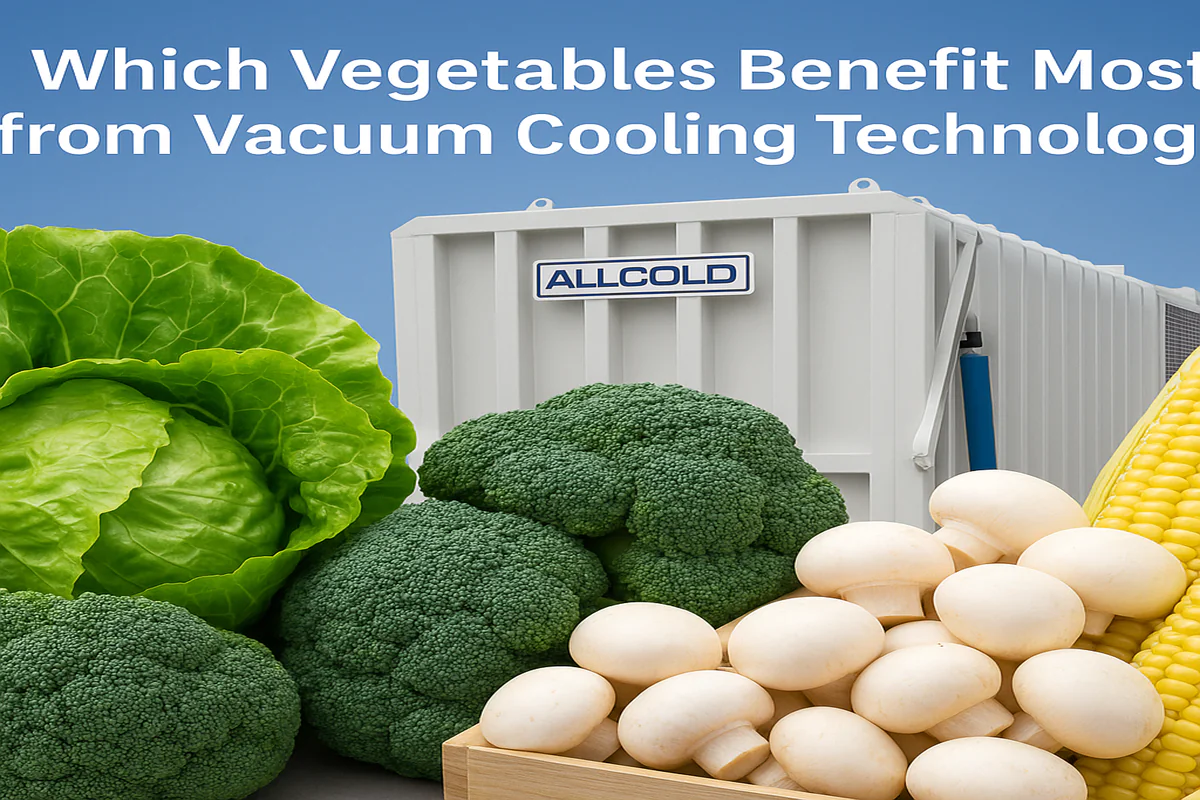
Which Vegetables Benefit Most from Vacuum Cooling Technology?
You see the promise of rapid cooling, extended shelf life, and superior quality, but you’re unsure if this technology is
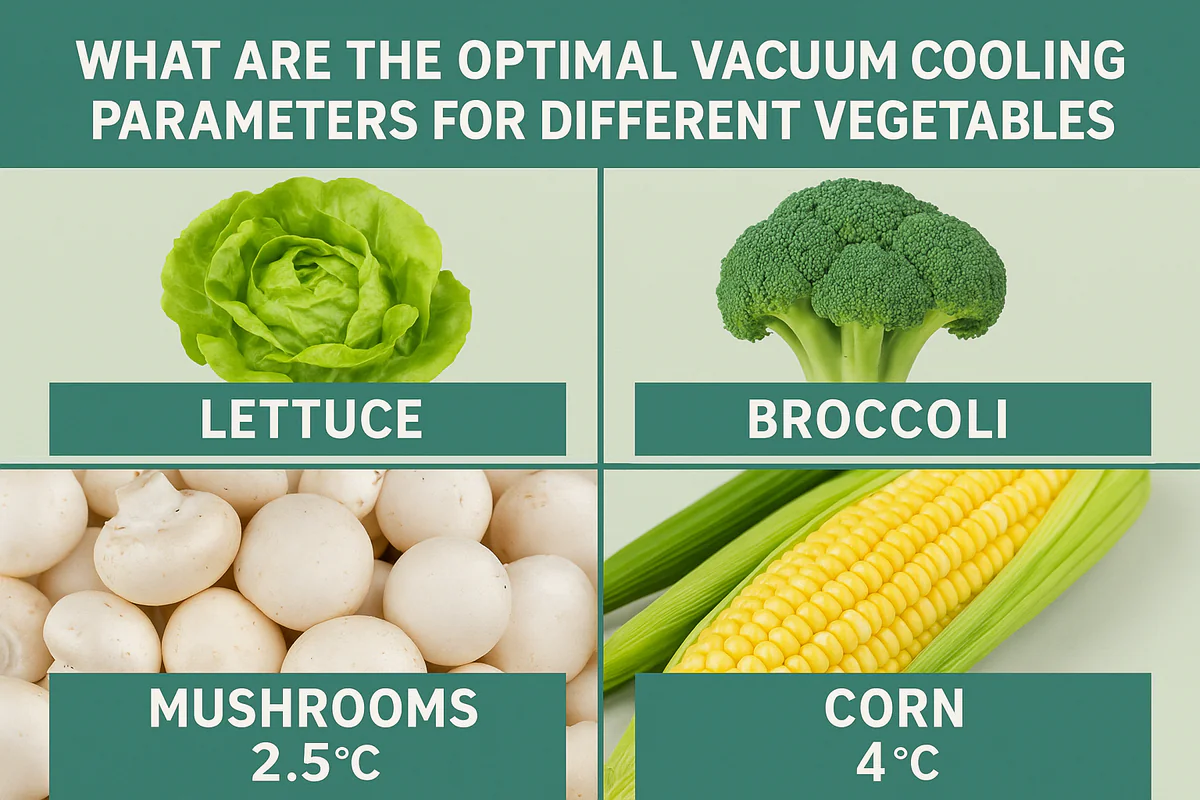
What Are the Optimal Vacuum Cooling Parameters for Different Vegetables?
You’ve harvested beautiful produce, from crisp lettuce to delicate mushrooms. But using a "one-size-fits-all" setting on your vacuum cooler feels
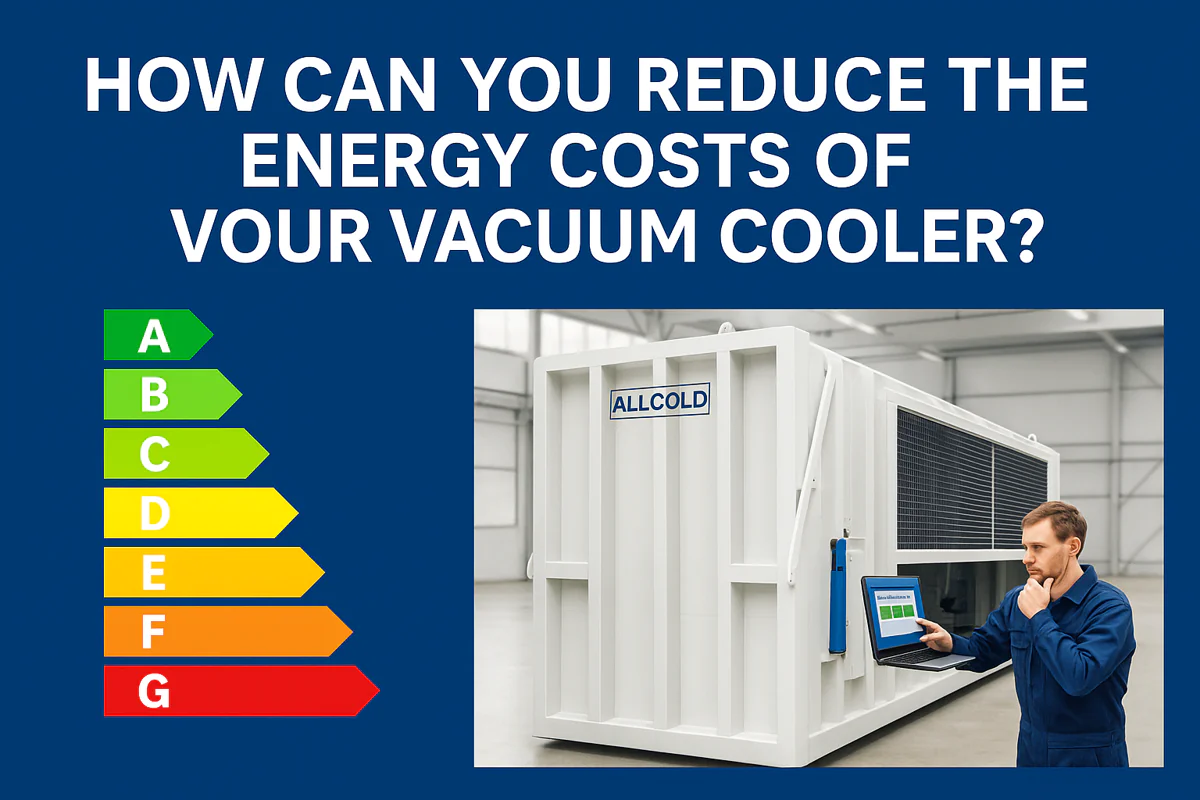
How Can You Reduce the Energy Costs of Your Vacuum Cooler?
Your vacuum cooler is a powerhouse of productivity, but your monthly electricity bill is climbing. You’re starting to wonder if
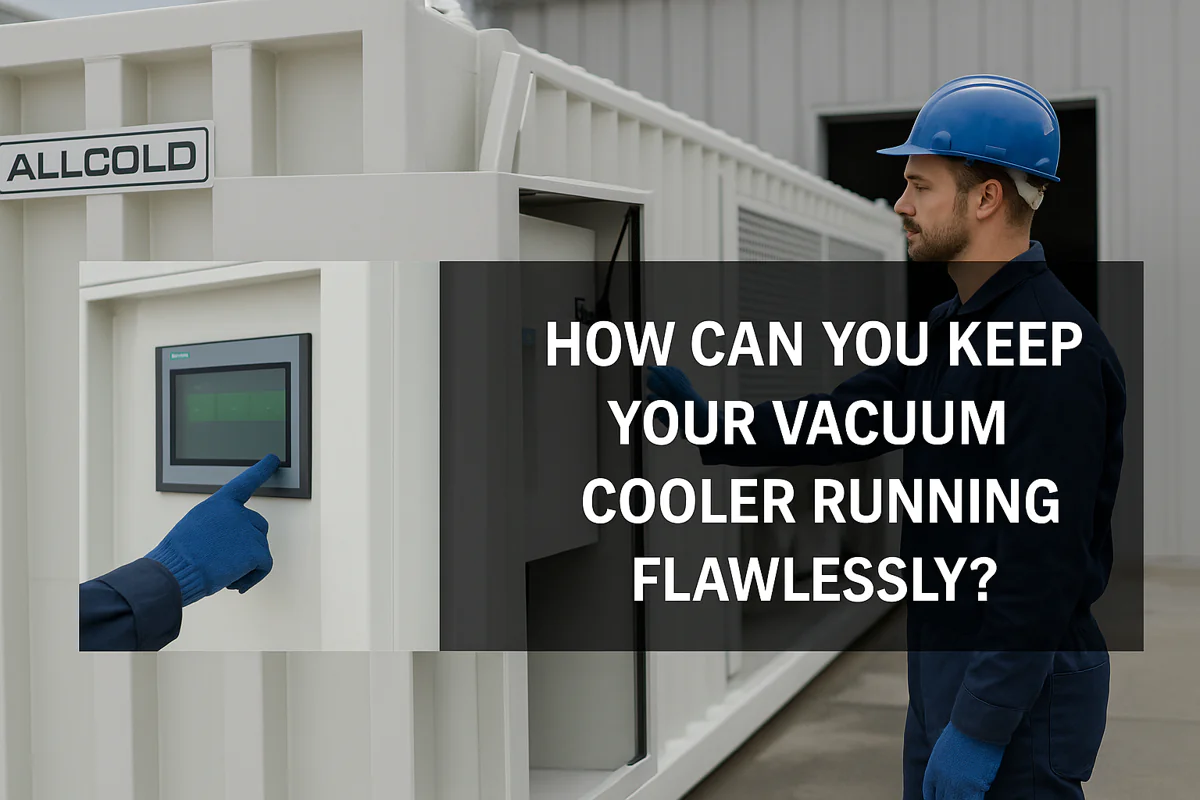
How Can You Keep Your Vacuum Cooler Running Flawlessly?
Your vacuum cooler is a vital asset, but you’re worried about unexpected breakdowns during peak season. Neglecting maintenance feels like
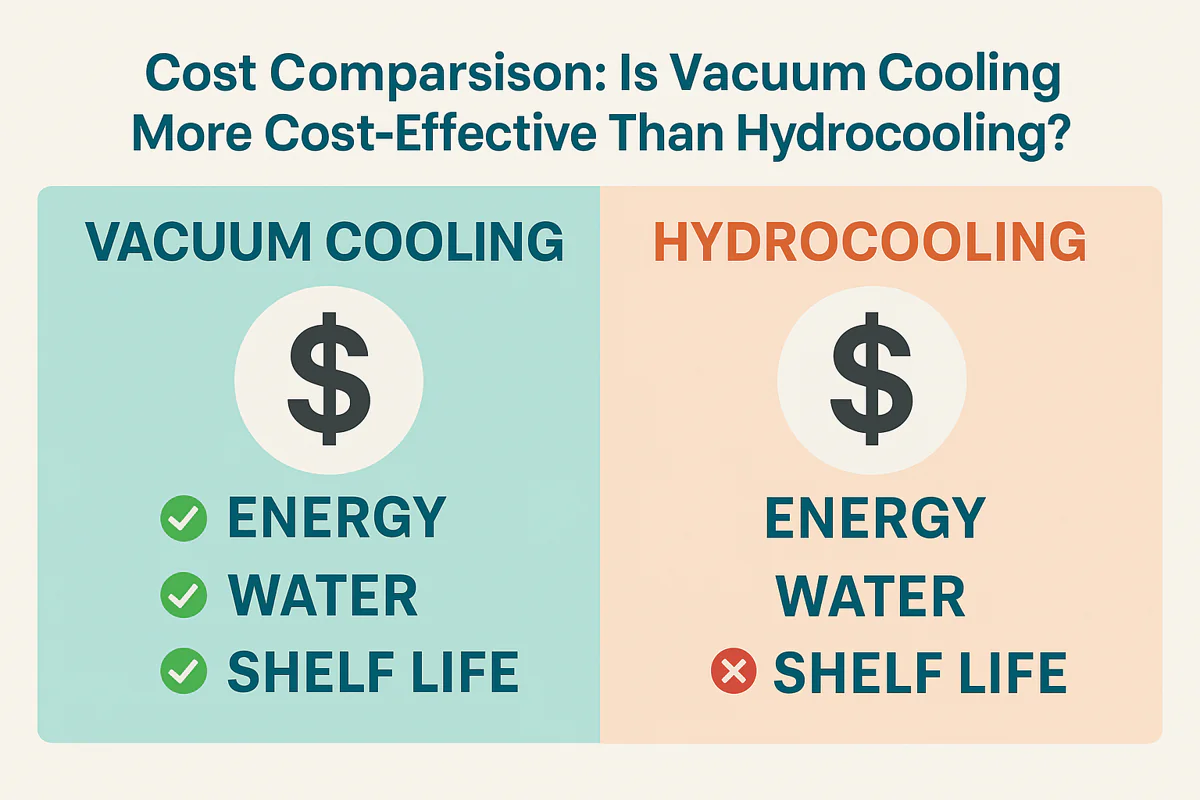
Cost Comparison: Is Vacuum Cooling More Cost-Effective Than Hydrocooling?
Choosing between cooling technologies feels like a high-stakes gamble. You need to lower your operational costs, but the wrong decision
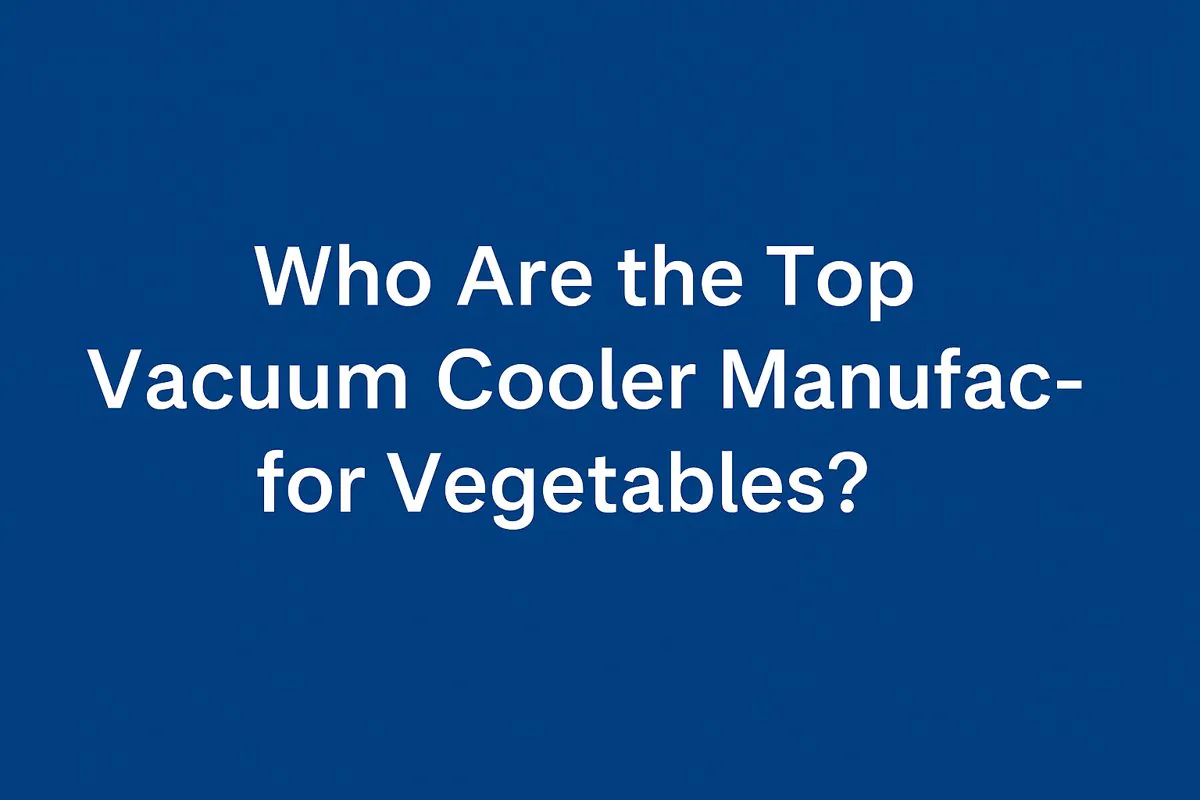
Who Are the Top Vacuum Cooler Manufacturers for Vegetables?
Searching for a list of top vacuum cooler brands can be overwhelming. You’re not just buying a machine; you’re investing
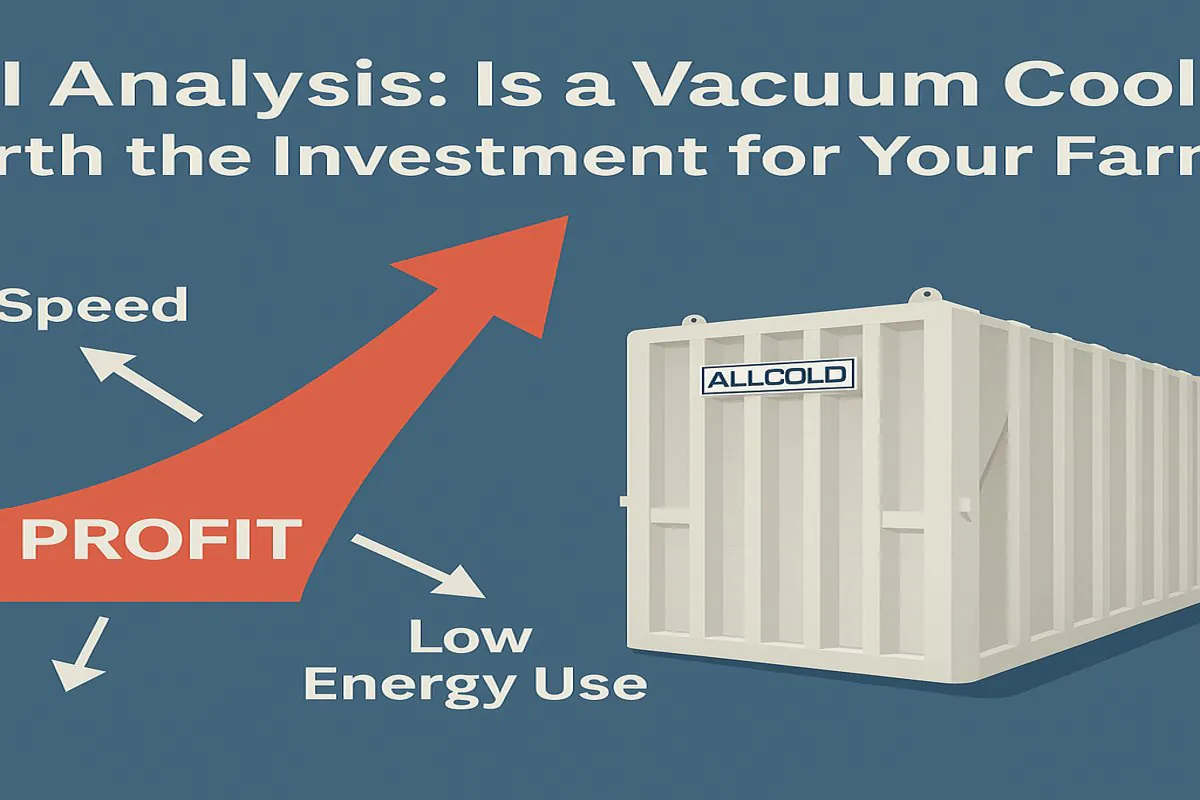
ROI Analysis: Is a Vacuum Cooler Worth the Investment for Your Farm?
You see the high upfront cost of a vacuum cooler and hesitate. But slow cooling methods and post-harvest losses are
